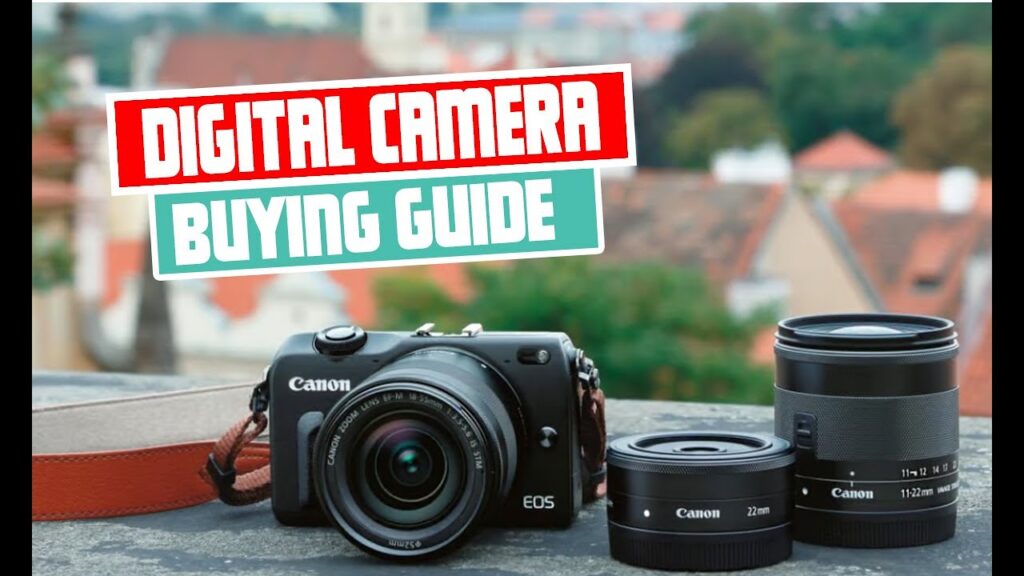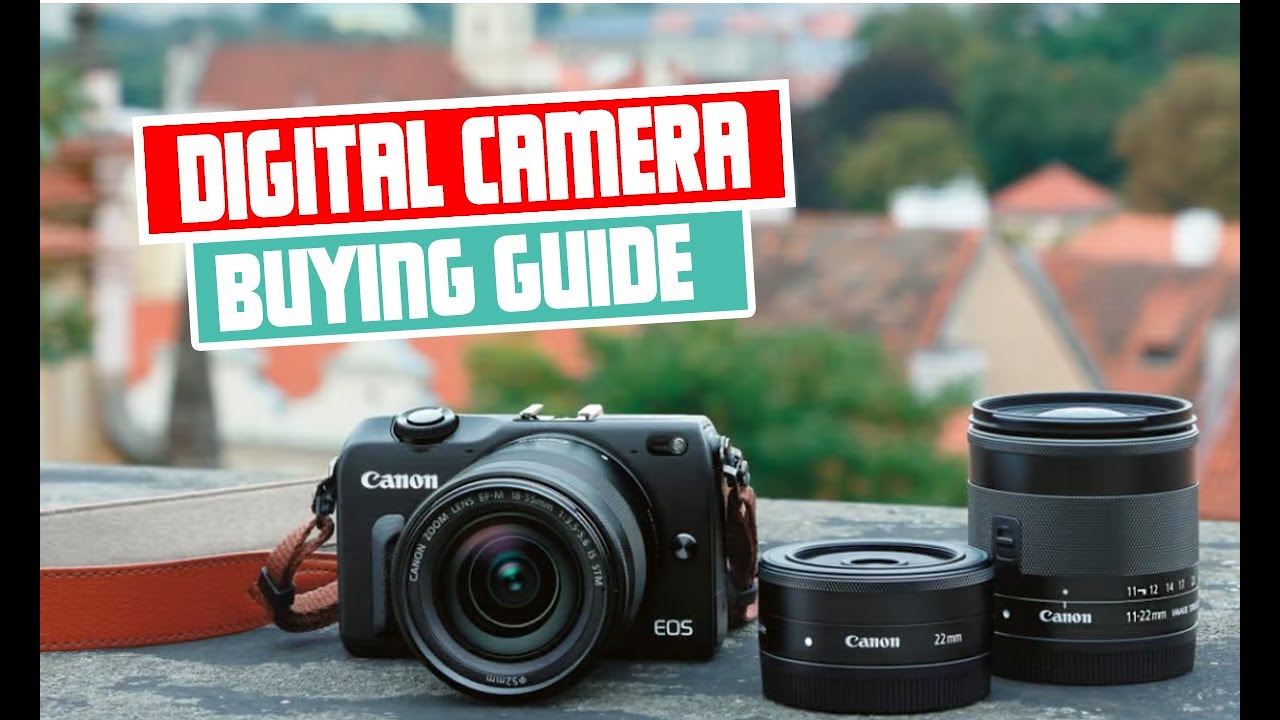Choosing the right digital camera can be a challenging task with so many options on the market. This guide aims to simplify the process, featuring key information on different camera types, essential features, and critical considerations to help you make an informed decision tailored to your needs.
You’ll find helpful insights on DSLRs, mirrorless, and compact cameras, as well as tips on assessing your skill level and intended use. We also cover important aspects like sensor size, lens compatibility, and ISO sensitivity to ensure you pick the perfect camera for your photography journey.
Digital Camera Buying Guide | How to Choose the Perfect Camera for Your Needs
Are you overwhelmed by the numerous options available when it comes to buying a digital camera? Look no further! In this comprehensive digital camera buying guide, we will provide you with all the information you need to make an informed decision and choose the perfect camera that suits your needs and preferences.

This image is property of i.ytimg.com.
Understanding Your Needs
Before diving into the technical complexities of cameras, it’s essential to understand your needs. This section will help you identify the type of camera that best fits your requirements.
Different Camera Types: DSLR, Mirrorless, Compact, and More
First, let’s explore the various types of cameras available:
- DSLR Cameras: These are popular among hobbyists and professionals alike for their superior image quality and versatility. They have an optical viewfinder that shows a direct optical image, which some photographers prefer.
- Mirrorless Cameras: Known for their compact size without sacrificing image quality. They offer electronic viewfinders and have gained popularity for their high-speed performance and portability.
- Compact Cameras: Also known as point-and-shoot cameras, these are user-friendly and ideal for casual shooters or those looking for convenience. They may lack some advanced features but are perfect for everyday use.
- Bridge Cameras: These are a middle ground between DSLRs and compacts, offering more control and versatility than point-and-shoot cameras but without the bulk and complexity of a DSLR.
- Specialty Cameras: This includes action cameras, 360-degree cameras, and instant print cameras, each designed for specific types of photography and user needs.
Assessing Your Skill Level and Intended Usage
Understanding your skill level is crucial in choosing the right camera. If you’re a beginner, you might be overwhelmed by the manual settings and advanced features of DSLRs or mirrorless cameras, making a point-and-shoot or simplified mirrorless model more suitable. For intermediate and advanced photographers, a DSLR or mirrorless camera with interchangeable lenses can provide more creative control and superior image quality.
Determining the Ideal Camera Size and Weight for Portability
Portability is another important factor. If you’re constantly on the move or enjoy traveling, you might prefer a compact or mirrorless camera, which are generally lighter and easier to carry compared to DSLRs. Remember that lighter doesn’t always mean better; it’s about finding the right balance between ease of carrying and the features you need.
Essential Camera Features
Now that you understand your needs, let’s delve into the essential features to look for in a camera.
Sensor Size and Megapixels: How They Impact Image Quality
Sensor size significantly impacts image quality. Larger sensors (like those in DSLRs and high-end mirrorless cameras) capture more light, resulting in better image quality, especially in low-light conditions. Megapixels, while important, should not be the only factor; more megapixels mean higher resolution but consider the sensor quality as well.
Lens Options and Compatibility
Versatility in lens options can greatly expand your photography capabilities. DSLRs and mirrorless cameras often offer a wide range of compatible lenses, from wide-angle to telephoto. Assess what types of photography you’re interested in (e.g., landscapes, portraits, sports) and choose a system that offers lenses to match your needs.
ISO Sensitivity and Low-Light Performance
ISO sensitivity determines how well the camera handles low-light situations. Cameras with higher ISO ranges allow you to shoot in darker conditions without significant noise. This is critical if you plan to shoot indoors, at night, or in dimly-lit environments.
Image Stabilization Techniques
Image stabilization is key for reducing blurriness caused by shaky hands or moving subjects. Optical stabilization is generally found in lenses, while sensor-shift stabilization is built into the camera body. Both have their pros and cons, but either way, it’s a valuable feature for achieving sharp images.
Additional Considerations
Beyond the core features, several other factors can influence your camera decision.
Video Recording Capabilities and Resolutions
If you plan to shoot videos, check the camera’s video recording capabilities. Look for resolution options (1080p, 4K), frame rates, and any additional video features like slow motion or time-lapse. A camera with good video capabilities can be a great all-in-one tool for both photography and videography.
Burst Mode and Continuous Shooting
Burst mode allows you to take several photos in quick succession by holding down the shutter button. This is particularly useful for sports or action photography. Continuous shooting speed is measured in frames per second (fps); higher fps rates are better for capturing fast-moving subjects.
Battery Life and Storage Options
Consider battery life, especially if you plan to use the camera for extended periods or while traveling. Mirrorless cameras often have shorter battery life compared to DSLRs, so carrying extra batteries might be necessary. Also, consider the storage options: most cameras use SD cards, but higher-end models may offer dual card slots for additional storage and backup.
Connectivity Features for Transferring and Sharing Your Photos
Modern cameras often come with built-in connectivity features like Wi-Fi, Bluetooth, or NFC, allowing for easy transfer and sharing of photos. Some models even offer remote control via smartphone apps. These features can significantly enhance your shooting and sharing experience.
Budget and Price Range
Your budget will naturally influence your camera choice. Here’s how to make the most of your money.
Understanding the Value of Different Price Segments
Camera prices can range from a couple of hundred dollars to several thousand. Entry-level models provide basic features and are perfect for beginners, while mid-range cameras offer more advanced functionalities for enthusiasts. High-end models are designed for professionals, offering the best in image quality, build, and performance but at a premium price.
Identifying Cameras that Offer the Best Features Within Your Budget
It’s important to identify which features are most important to you and focus your budget on those areas. For instance, if image quality is your top priority, allocate more for a better sensor and lens. If video is crucial, look for models with excellent video capabilities even if it means compromising on some other features.

Research and Comparison
Doing your homework is essential to making an informed decision.
Utilizing Online Resources and Customer Reviews
There are numerous online resources and review sites dedicated to cameras. Websites, forums, and YouTube channels can provide valuable insights and user experiences that go beyond what you see in a product description.
Exploring Camera Sample Images and Videos
Many review sites and camera manufacturers offer sample images and videos taken with specific models. These can give you a real-world perspective on what you can expect in terms of image quality and performance.
Considering the Reputation of Camera Brands
Brand reputation matters. Established brands like Canon, Nikon, Sony, and Fujifilm have a proven track record of quality and reliability. However, newer brands or models shouldn’t be dismissed outright; always look for comprehensive reviews.
DSLR Cameras
DSLR cameras have been the go-to choice for both beginners and professionals for years.
Advantages and Disadvantages
Advantages:
- Excellent image quality due to larger sensors.
- Versatile lens choices.
- Optical viewfinder with no lag.
Disadvantages:
- Heavier and bulkier compared to mirrorless.
- Generally higher costs.
Popular Models and Brands
Popular DSLR models include the Canon EOS series and Nikon’s D series. Canon’s EOS 5D and Nikon’s D850 are highly regarded among professionals, while models like Canon EOS Rebel series or Nikon’s D3500 offer good entry points for beginners.
Who Should Consider Buying a DSLR
If you value image quality and prefer the optical viewfinder experience, a DSLR is a solid choice. They’re perfect for anyone serious about photography, from hobbyists to professionals.
Mirrorless Cameras
Mirrorless cameras have surged in popularity due to their compact size and advanced features.
Advantages and Disadvantages
Advantages:
- Compact and lightweight.
- Electronic Viewfinder (EVF) with real-time exposure previews.
- Rapid advancements in autofocus and continuous shooting.
Disadvantages:
- Generally shorter battery life.
- Some lag in the EVF.
Popular Models and Brands
Sony’s Alpha series, Fujifilm’s X series, and Canon’s EOS M and R series are well-regarded. Models like Sony A7 III and Fujifilm X-T4 provide excellent quality and performance across the board.
Who Should Consider Buying a Mirrorless Camera
For those who seek high performance in a compact body, mirrorless cameras are ideal. They are suitable for a wide range of photographers, from travelers to professionals looking for a lighter kit.
Compact Cameras
Compact cameras are designed for convenience and ease of use.
Advantages and Disadvantages
Advantages:
- Very portable and easy to use.
- Often include fun and creative modes.
Disadvantages:
- Limited manual control and lower image quality.
Popular Models and Brands
Popular compact cameras include the Sony RX100 series, Canon PowerShot series, and Panasonic Lumix series. These offer a good balance of quality and portability.
Who Should Consider Buying a Compact Camera
Point-and-shoot cameras are perfect for casual photographers or those who want a simple, pocket-friendly camera for documenting everyday moments or travel.
Specialty Cameras
Specialty cameras cater to specific photography needs.
Action Cameras
Designed for capturing fast-paced activities, action cameras like the GoPro series are rugged, waterproof, and equipped with wide-angle lenses. They are perfect for sports, adventures, and extreme conditions.
360-Degree Cameras
These cameras capture immersive spherical images and videos. Brands like Insta360 and Ricoh Theta are popular choices. They are great for virtual tours, action sports, and creative panoramas.
Instant Print Cameras
Instant cameras like the Fujifilm Instax series provide the thrill of instant gratification by printing photos on the spot. They are fantastic for parties, events, and creative projects.
Conclusion
Summarizing Key Points
Choosing the right camera involves understanding your needs, the types of cameras available, and the essential features that match your photography style. From sensor size to connectivity features, each aspect plays a crucial role in your overall satisfaction.
Final Advice on Choosing the Right Camera
Don’t rush the decision-making process. Assess your skill level, intended use, and budget carefully. Use online reviews, sample images, and videos to make an informed decision.
Encouragement to Make an Informed Decision
Remember, the best camera is the one that suits your specific needs and inspires you to capture more memorable moments. Whether you’re eyeing a compact camera for travel or a high-end DSLR for professional work, there’s a perfect camera out there for you. Happy shooting!

